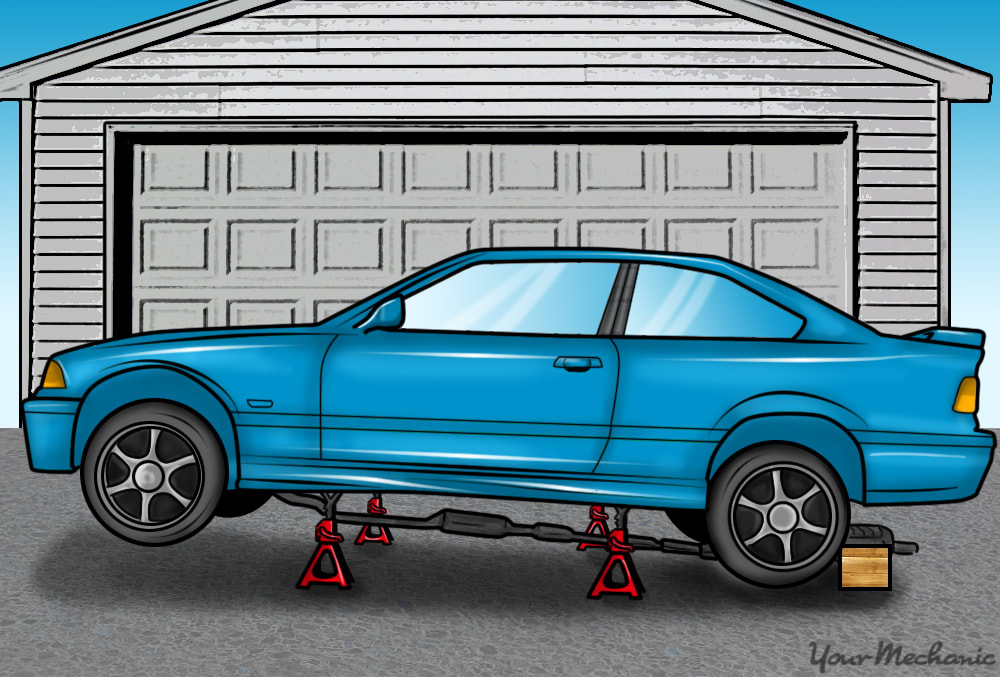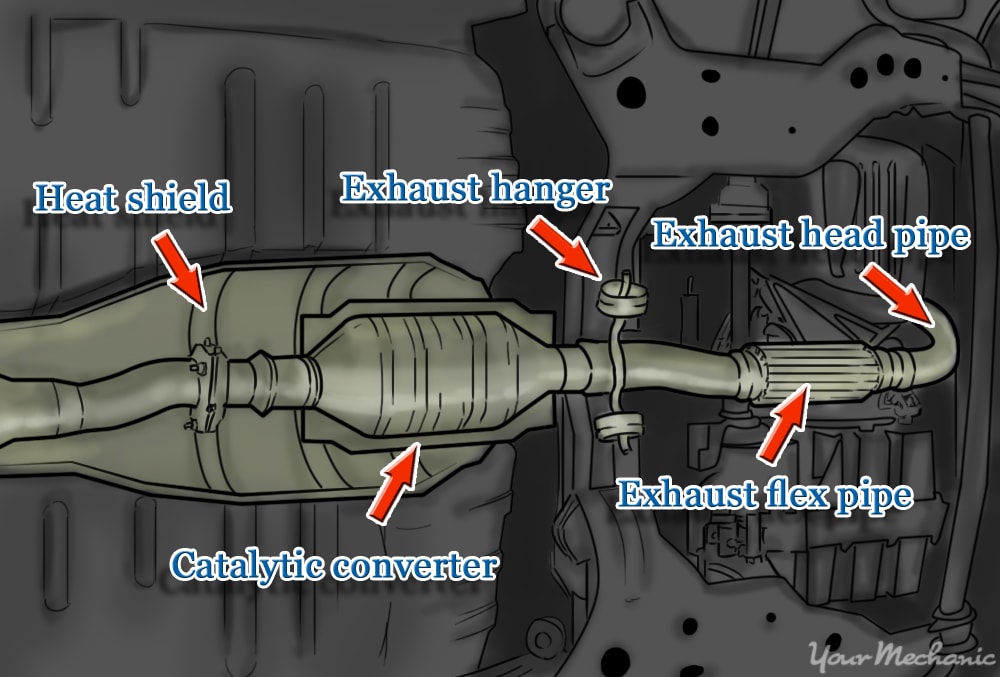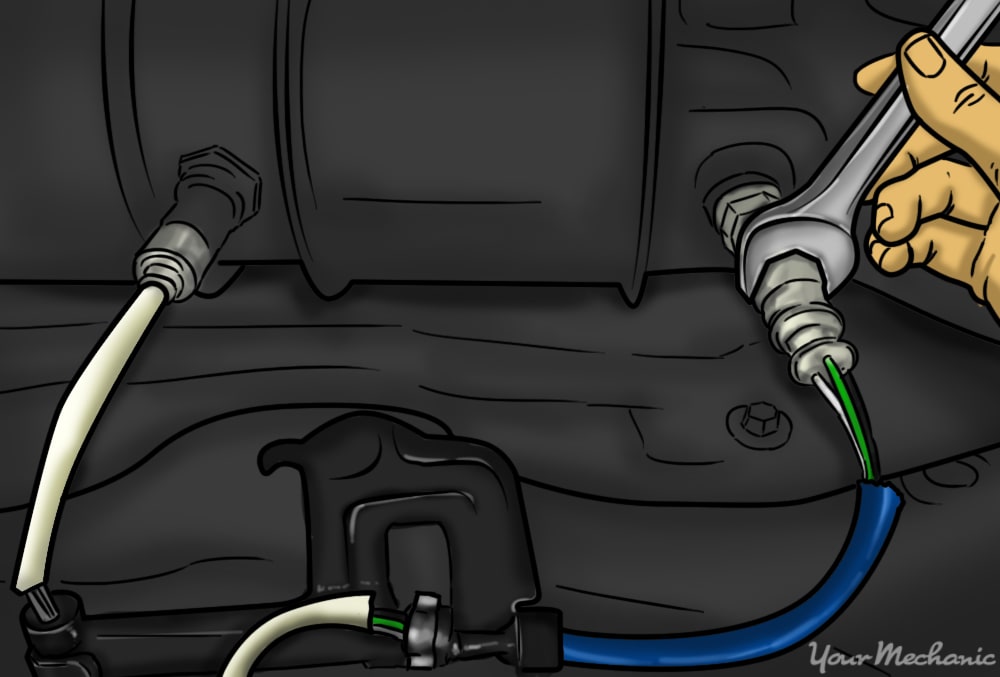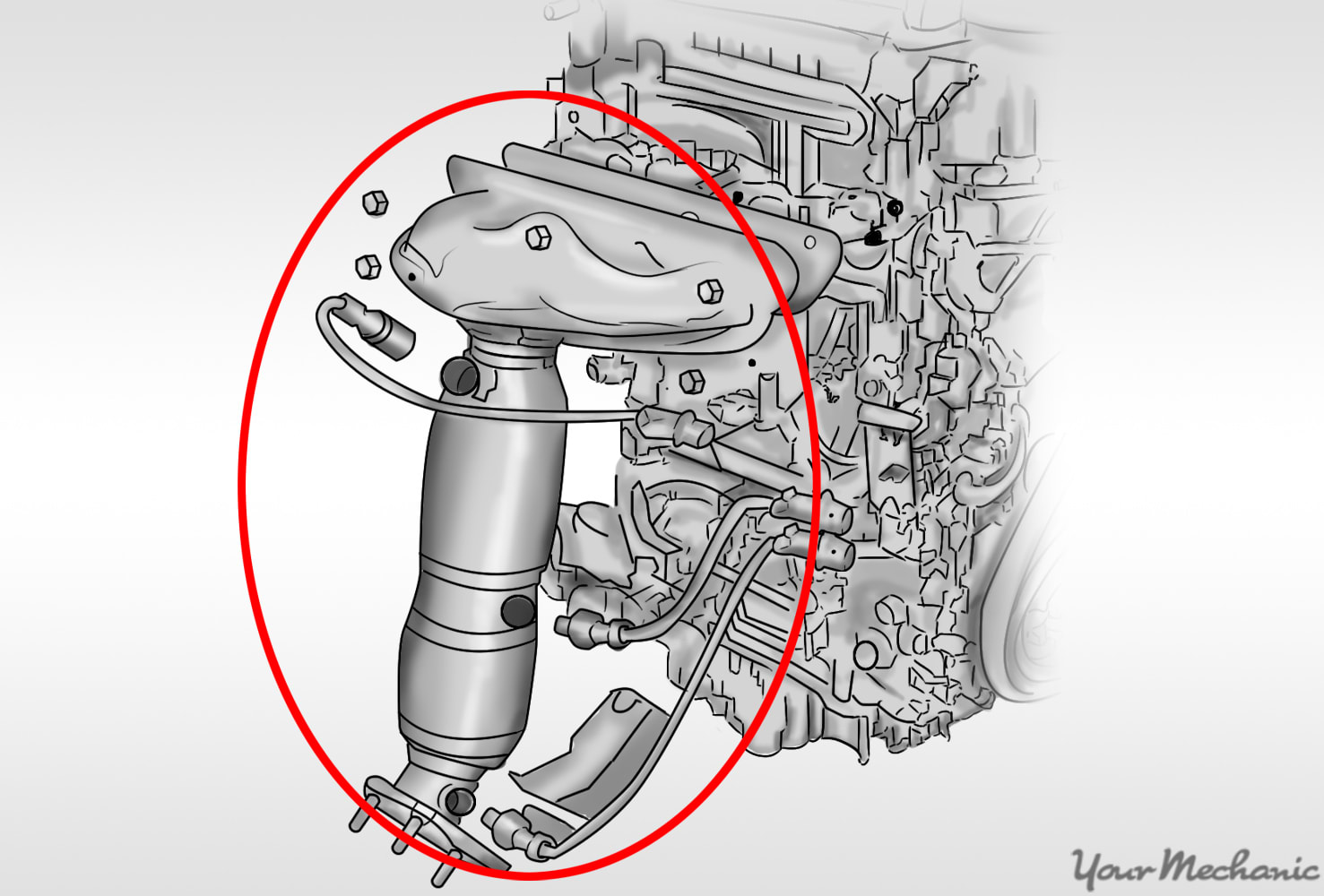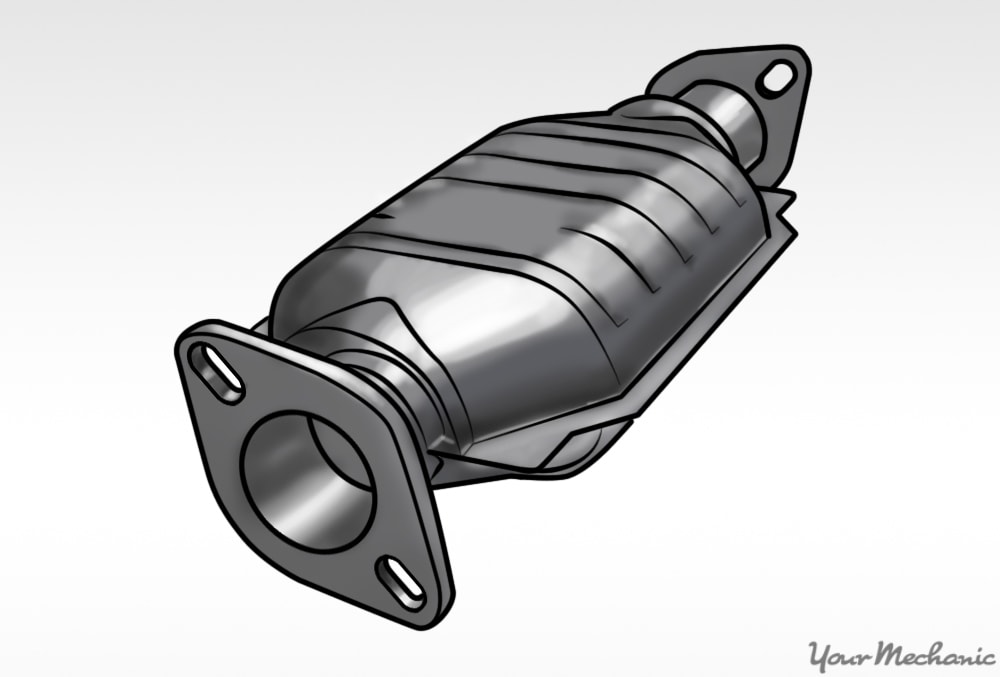

A catalytic converter is one of the most important emissions components of the modern gasoline engine. It is part of the vehicle’s exhaust system, and is responsible for keeping the vehicles hydrocarbon emissions below acceptable levels. Its failure will usually activate a Check Engine Light and will cause the vehicle to fail an emissions test.
Catalytic converters fail over time due to the interior catalyst substance breaking down from regular cyclical use, or from damage suffered from poor engine performance conditions, such as extended driving with an excessively lean or rich mixture. As catalytic converters are usually sealed metal units by design, once they have failed they must be replaced.
Typically, catalytic converters are secured in two ways: either bolted up at the flanges or welded directly into the pipes of the exhaust system. Exact procedures for replacing catalytic converters vary from vehicle to vehicle, however, the more common bolt-on type design is a job that can be typically done with the right set of hand tools and knowledge. In this article, we will cover how to replace the more common bolt-on designs of catalytic converters.
Method 1 of 2: Installing a bolt-on type catalytic converter located in the exhaust system
There are many ways a catalytic converter can be bolted on, specifics vary from vehicle to vehicle. In this particular instance we will cover the more common bolt-on type design in which the catalytic converter is located on the underside of the vehicle.
Materials Needed
- Assortment of wrenches
- Jack
- Jack stands
-
Penetrating Oil
- Ratchet and socket assortment
- Ratchet extensions and joints
- Safety glasses
Step 1: Raise the vehicle and secure it on jack stands. Make sure to raise the vehicle enough to give space for maneuvering underneath the vehicle.
Set the parking brake, and use stoppers or wood blocks under the tires to prevent the vehicle from rolling.
Step 2: Find the catalytic converter. Identify the catalytic converter on the underside of the vehicle.
It is typically located towards the front half of the vehicle, usually behind the exhaust manifold.
Some vehicles will even have multiple catalytic converters, in those instances it is important to note which bank catalytic converter needs to be replaced.
Step 3: Remove any oxygen sensors. If required, remove any oxygen sensors that may be mounted directly in or near the catalytic converter.
If no oxygen sensor is mounted in the catalytic converter, or need be removed, proceed to step 4.
Step 4: Spray penetrating oil. Spray penetrating oil on the exhaust flange hardware and flanges, and allow them a few minutes to soak.
Because of their location on the underside of the vehicle and exposure to the elements, exhaust nuts and bolts are especially prone to rust and seizing, so spraying them with penetrating oil will break free more easily, and help avoid problems with stripped nuts or bolts.
Step 5: Prepare your tools. Identify what size sockets or wrenches are required to remove the catalytic converter flange nuts or bolts.
Sometimes various extensions or flex joints, or a ratchet and socket on one side, and a wrench on the other side are required for removal.
Take care to make sure the tools are properly seated before attempting to torque the hardware loose. As noted earlier, exhaust hardware is especially prone to rust and therefore extra care must be taken not to round off or strip any hardware.
Remove the hardware and the catalytic converter should come free.
Step 6: Replace the catalytic converter. Replace the catalytic converter with a new one, and replace any exhaust flange gaskets to prevent exhaust leaks.
Also take care to double check that the replacement catalytic converter is up to the correct specifications for the vehicle’s emissions standards.
Emissions regulations vary from state to state, and a vehicle can be failed for having the incorrect catalytic converter installed.
Step 7: Install the catalytic converter. Install catalytic converter using the reverse of the removal procedure, steps 1-5.
Method 2 of 2: Installing a catalytic converter built into the exhaust manifold
Some vehicles use a catalytic converter design that is built into the exhaust manifold, and bolts directly to the head(s), and leads down into the exhaust system. These types of catalytic converters are also very common, and in many instances can also be replaced with a basic set of hand tools.
Step 1: Locate the catalytic converter. For vehicles that utilize catalytic converters that are built into the exhaust manifolds they can be found under the hood, bolted directly to the engine cylinder head, or heads, if it is a V6 or V8 engine.
Step 2: Remove obstructions. Remove any covers, cables, wiring, or intake pipes that may be obstructing access to the exhaust manifold.
Also take care to remove any oxygen sensors that may be mounted in the manifold.
Step 3: Spray penetrating oil. Spray any exhaust manifold nuts or bolts with penetrating oil and allow them to soak for a few minutes.
Remember to spray not only the hardware at the head, but the hardware at the bottom flange leading down to the rest of the exhaust.
Step 4: Raise the vehicle. Depending on the design of the vehicle, sometimes the bottom bolts can only be reached from underneath the vehicle.
In these instances it would then be required to raise the vehicle, and secure it on jack stands in order to access these nuts or bolts.
Step 5: Identify the tools needed. Once the vehicle is raised and secure, identify what size tools are required, and loosen the exhaust manifold hardware both at the head and at the flange. Again take care to make sure that the tools are properly seated before attempting to loosen the nuts or bolts, as to avoid stripping or rounding off any hardware.
Once all of the hardware has been removed the manifold should come loose.
Step 6: Replace the catalytic converter. Replace catalytic converter with a new one.
Replace any manifold and exhaust gaskets as to prevent exhaust leaks or engine performance issues.
Step 7: Install the new catalytic converter. Install new catalytic converter using the reverse of the removal procedure.
All things considered, bolt-on type catalytic converters are typically a simple job to do, however, the specifics can vary greatly from vehicle to vehicle. If you do not feel comfortable attempting to replace one yourself, have a certified technician, such as one from YourMechanic replace your catalytic converter for you.



